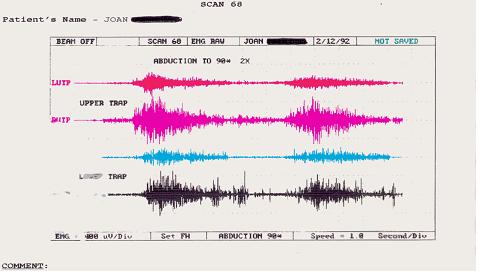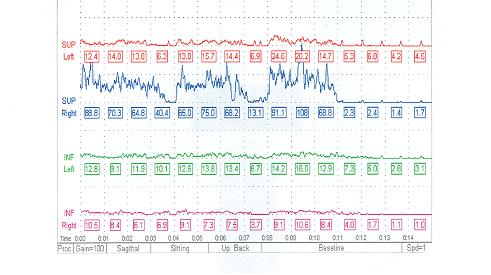Muscle activity is recorded to determine whether a client exhibits a pattern of muscle recruitment, which may be indicative of dysfunction, and whether a muscle re-education treatment plan would benefit the client.

The sEMG recording is an assessment procedure that displays levels of function or dysfunction of the muscle being tested. The information gained from the assessment is used in treatment to help correct any imbalance and restore normal electrical activity to the muscles.
Physiology Relating to sEMG
Muscles work in bilateral left and right pairs, meaning the electrical activity in both muscles of a pair should be equal. Damage to the muscular, skeletal, or nervous system can alter the electrical activity of a muscle causing what is known as "muscle imbalance". The more muscle imbalances that occur, the greater the overall dysfunction of the physical body. Muscle imbalances can cause muscles to become hypertonic (tense or stiff) and compress structures in the body such as nerves and blood vessels. This may lead to numbness or tingling in the arms and legs, and/or pain. Depending on the muscles that have imbalances, the person may experience headache pain, jaw and neck pain, back and hip pain, etc.

Surface Electromyography is a technique used to measure the electrical activity of surface muscles. This enables the practitioner to detect muscle imbalances. Once a muscle pair is deemed to be asymmetrical (not balanced), the appropriate exercises are applied to one muscle of the pair in an attempt to achieve a balance. These exercises do not involve lifting weights or potentially straining the muscle.
These exercises are for re-balancing as opposed to strengthening and are small, focused movements done for a short period of time.